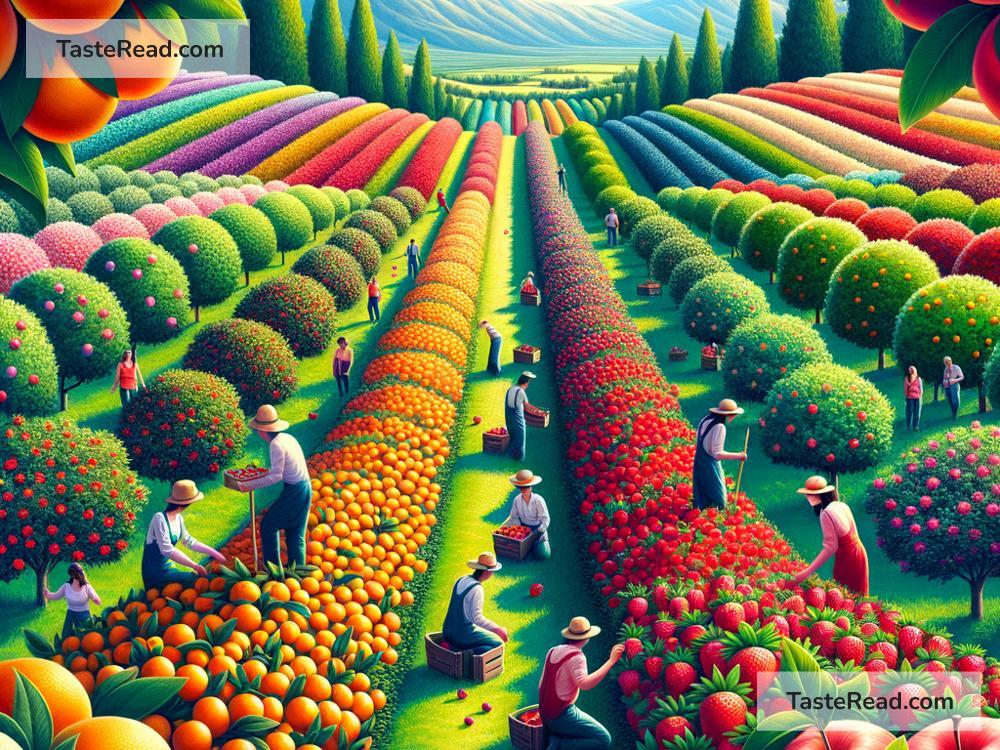How Environmental Factors Affect the Flavor of Fruits
Have you ever bitten into a juicy strawberry and wondered why it tastes so sweet and rich? Or why some apples taste crisp and tangy while others are mild and bland? The answer lies in the environment where the fruit grows. Environmental factors have a huge impact on the flavor of fruits, shaping their sweetness, tanginess, aroma, and overall taste. In this blog, we’ll explore how weather, soil, sunlight, water, and even temperature affect the way fruits taste.
What Creates Flavor in Fruits?
Before diving into the environmental factors, let’s briefly understand what gives fruits their flavor. Fruits develop their taste from natural compounds like sugars, acids, and aromatic molecules. Sugars make fruits sweet, while acids add tanginess. Aromatic compounds give fruits their unique smells and flavors, such as the citrusy zest in oranges or the floral notes in grapes. The balance of these compounds is what determines whether a fruit is sweet, tangy, or bland.
Plants don’t just “make” these compounds randomly—they are influenced heavily by the environment around them. Now, let’s see how different environmental factors play a role.
1. Sunlight
Sunlight is one of the most important factors for fruit development and flavor. Fruits rely on sunlight for photosynthesis—a process where plants convert sunlight into energy. This energy helps produce sugars in the fruit, which are essential for sweetness. If a plant gets plenty of sunlight, the fruit will likely have more sugar and taste sweeter. On the other hand, fruits grown in shady or low-light conditions may be less sweet.
For instance, grapes grown in sunny vineyards tend to have higher sugar content, which makes them perfect for sweet wines. Similarly, oranges thrive best in sunny regions, where their flavor becomes vibrant and tangy.
2. Temperature
Temperature also plays a key role in shaping fruit flavor. When fruits are exposed to warm temperatures, their sugars and aromatic compounds develop more intensely. Warm nights, in particular, encourage sugar accumulation, making fruits like mangoes, peaches, and melons sweeter.
However, some fruits, like apples and cherries, prefer cooler climates. Cold temperatures slow down ripening, which allows these fruits to maintain their crisp texture and tangy flavor. For example, apples grown in colder regions, like Washington State or northern Europe, often have a sharper taste compared to those grown in warmer climates.
3. Rainfall and Water
Water is essential for fruit development, but too much or too little water can change their flavor. When fruits receive the right amount of water, they develop evenly and maintain a balance between sweetness and acidity. But if a plant gets too much water—for example, during heavy rains—the fruit can become diluted, losing its sweet, intense flavors. On the other hand, drought stress (a lack of water) can sometimes enhance sweetness because the sugars become more concentrated in the fruit.
For instance, watermelons and tomatoes grown in regions with moderate water availability often have richer flavors compared to those from areas with excessive irrigation or rain.
4. Soil Quality
The soil where the plant grows provides essential nutrients that can affect the flavor of fruits. Rich, fertile soil helps plants produce healthy fruits with vibrant flavors. Micronutrients like potassium, magnesium, and calcium influence the sweetness, acidity, and texture of fruits.
Some fruits have very specific soil needs. For example, pineapples thrive in acidic soil, which contributes to their tart yet sweet taste. Grapes grown in rocky or mineral-rich soil in places like France or Italy often yield wine with complex, earthy flavors because the soil imparts unique characteristics to the fruit.
5. Altitude
Believe it or not, the altitude (how high up a location is) can also affect fruit flavor. Fruits grown at higher altitudes often experience cooler temperatures and brighter sunlight during the day. This combination is perfect for developing complex flavors. For example, coffee beans and apples grown at high altitudes tend to be sweeter and have more intense flavors because the fruits ripen more slowly.
6. Local Climate and Weather
The overall climate of a region, including seasonal changes and weather patterns, has a significant impact on fruit flavor. For example, tropical fruits like bananas, papayas, and coconuts grow best in consistently warm climates, which enhance their rich, sweet taste. On the other hand, berries tend to thrive in cooler, wetter climates, which gives them their tart and refreshing flavor.
Sudden weather changes, such as droughts, floods, or storms, can also affect fruits. Unpredictable weather can lead to differences in flavor from year to year.
The Role of Farmers and Techniques
While environmental factors play a big role, farmers can also influence fruit flavor through their growing techniques. For example, pruning trees and vines ensures fruits get enough sunlight. Farmers might also limit irrigation closer to harvest to make fruits sweeter. The choices they make—like when to pick the fruit—can change its taste.
Conclusion
As you can see, the flavors of fruits are deeply connected to the environment they grow in. Sunlight, temperature, rainfall, soil, altitude, and climate all work together to create the unique taste of each fruit. The next time you enjoy a delicious piece of fruit, take a moment to appreciate the complex environmental factors that shaped its flavor. It’s a reminder that nature has a big hand in creating the foods we love!
So, whether you’re enjoying a crisp apple or a sweet mango, remember: every bite carries the story of its environment.


